TABLE OF CONTENTS
All the rage about purple, pink, golden, and “special” colored buds shade out the best dark green strain names in the cannabis world.
While the uniqueness of different color marijuana is a sight to see, nothing beats those forest-green nugs that look like nature bottled up into one dense bud of cannabis goodness!
Forget the best purple strains, let’s look at the best dark green strains!
The Colors Of Cannabis
The colors featured on a bud, while pretty, don’t alter the effects of the experience. Many colors, like the purples and blues featured in many strains, are simply a by-product of cold temperatures during the early stages of flowering.
But, with the green in cannabis buds, there is a distinct visual difference between lime green and dark green. Sure, the effects aren’t necessarily different.
But, the bag-appeal can make or break a sale no matter how good a Budtender is trying to sell their special of the week!
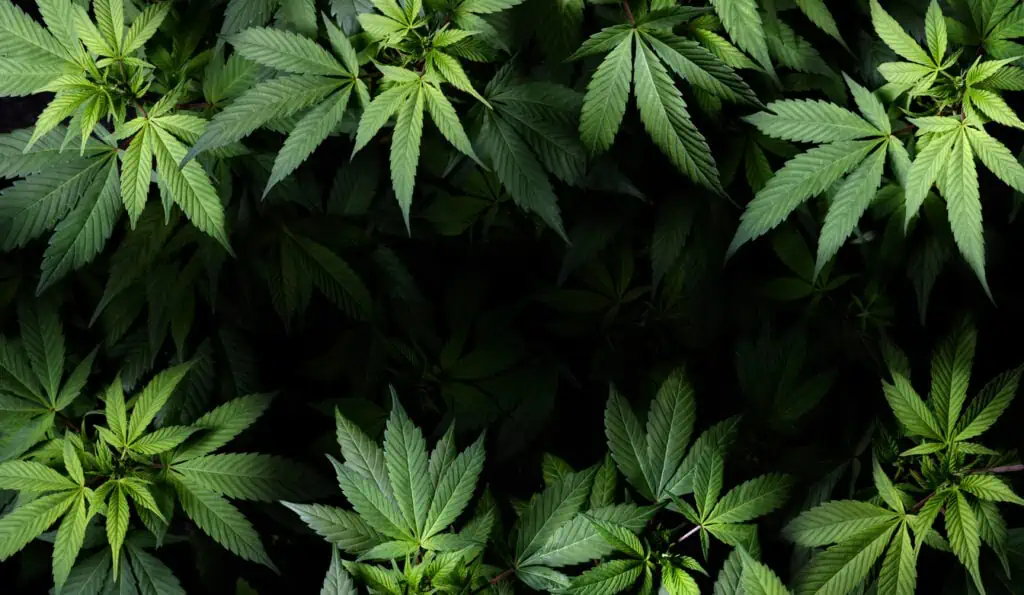
The Best Dark Green Strain Names Available
Hundreds, if not thousands, of cannabis strains feature dark green buds.
To make things more fun, we narrowed down our list to only include strains with the word “Green” included in the name. This should help expose some of the more rare strains on the market to expand your horizons! Some of the more dominant hybrid marijuana strains are dark green in color. Let's check out some dark green strain names.
Green Goblin
This phenotype of Green Crack offers forest-green nugs that deliver a mixture of musky skunk and pungent diesel strain smells. It’s energizing and dreamy throughout the experience and melts off into a relaxing body-high at the end.
Green Skunk
A cross between Green Crack and Skunk #1 brings this green beauty to us. Skunky spice and herbal citrus dominate its essence.
The high creeps up with an energy boost and creativity and then fades off into sedation towards the end, making it a wonderful sidekick at evening social functions.
Green Queen
Yet another offspring of Green Crack, this time it was crossed with Space Queen. These deep green buds will deliver mental and physical energy without being too racy.
The essence is slightly sweet and features skunk, citrus, and pepper. This wonderful hybrid takes the best from both of its parents to become a great dark green weed strain.
God’s Green Crack
Green Crack is crossed with God Bud to bring cerebral energy and physical relaxation.
While cold temperatures during flowering will quickly turn these buds purple, if temperatures remain steady they should turn out as a beautiful green.
Green Line OG
This unique strain is the result of crossing Ghost OG and Lime Skunk. This is a happy hybrid weed strain that delivers fluffy forest green buds.
The experience is relaxing and uplifting and consumers will love the lime flavor with the aromatic profile of earthy skunk and citrus.
Green Python
Crossing Green Crack and Burmese results in indica-dominant hybrid strain Green Python. It delivers more relaxation than most Green Crack offspring. The sweet and spicy kush essence is apparent in this rare bud.
House Of Funk Genetics gets the credit for bringing this wonderful offspring to life!
Green Kush
Not to be confused with Green Cush, which is the more positive name used to describe the Green Crack strain, Green Kush is the result of crossing Green Crack and Purple Kush.
The high in this sativa strain will last up to two hours and can bring on a rush of energy followed by a sense of sedation.
The aroma features pine and diesel. The flavor is spicy, sweet, and earthy.
Green Lantern
While there is some debate on what Green Lantern may have originally been bred from, the new-age Green Lantern strain is a cross of Green Crack and White Rhino. The essence is dominated by sweet and spicy lemon and pine.
This potent strain's high hits quickly and sends you off on a deep psychoactive cerebral journey. Most consumers don’t even notice the body-high effects because their imagination is running wild!
Green Love Potion
This is another strain that can turn purple with the right temperatures during flowering, but it can also stay deep green in warmer climates.
Green Love Potion is the result of crossing Black Domina and Lavender. The small buds are drenched in resin and feature an essence of mint, lavender, and hash.
Green Monster
Said to be a cross of OG Kush, Purple Urkle, and Killer Queen, this is not a strain for those prone to anxiety or paranoia. A few hits of this dark green bud can easily send you down the rabbit hole where you lose your sense of self if you aren’t careful.
The aroma is pungent and piney while the flavor is a mixture of lemon candy and woody diesel.
Green Magic
Crossing Green Manalishi with White Choco gets you this indica-leaning hybrid pot strain. Sweet and spicy chocolate and coffee dominate the essence of Green Magic.
The long-lasting high kicks in after a few minutes with cerebral euphoria and total relaxation that can induce couch-lock for many consumers. It’s a favorite among medicinal marijuana users.
Green Cheese
Crossing Green Crack and a specific phenotype of the legendary Cheese strain gets you Green Cheese. While the name sounds unappetizing, the flavor profile resembles cream cheese with citrus notes on the exhale, which is quite enjoyable.
However, the high provides racy energy for hours and can easily lead to a frenzy of anxiety and paranoia. Leave this one alone if you are prone to these conditions when consuming marijuana!
Green Haze
Green Haze strain is typically a mixture of light and dark green. A.C.E. Seeds is responsible for this wonderful cannabis strain.
The floral diesel mixture in the essence pairs well with the upbeat energizing high that can almost reach psychedelic levels for consumers with a low tolerance for THC.
Thos are some of the most popular dark green strain names on the market today.
What Do The Colors of Marijuana Mean?
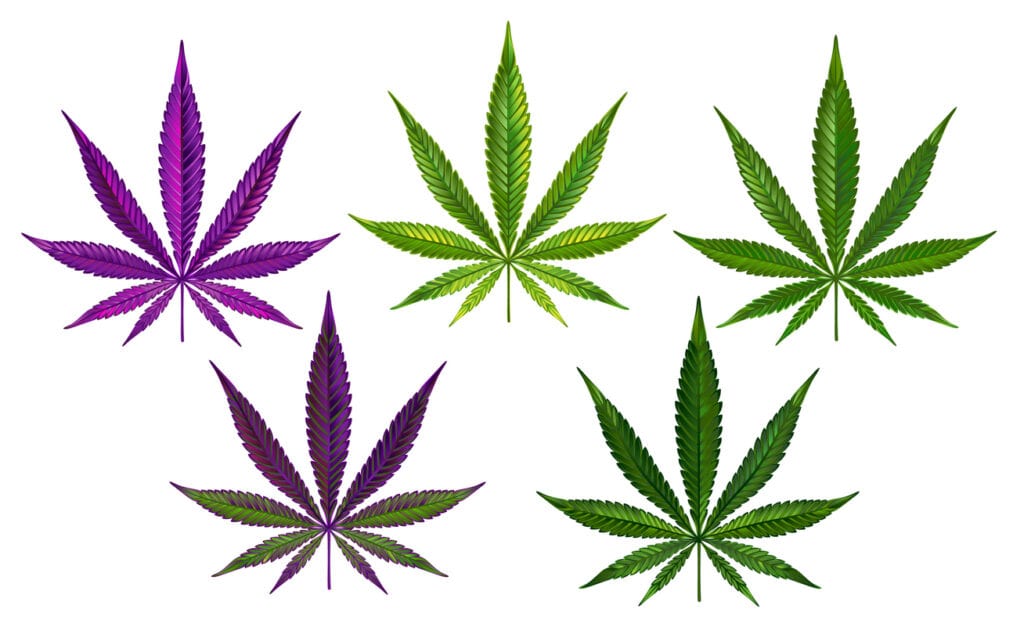
Marijuana's colors can reveal a lot about its condition, level of ripeness, quality, and, to some extent, potential effects. Here are some broad generalizations regarding colors and their interpretations:
Green: Marijuana's most prevalent color is green. Greens can range in hue from light to dark. Cannabis's green color is a result of the photosynthesis-related molecule chlorophyll. Bright or deep green is the characteristic color of fresh, high-quality marijuana.
Anthocyanins, pigments that also give fruits and vegetables their red, blue, or purple hues, are what give some cannabis strains their naturally purple color.
However, in some strains throughout the growth period, purple can also be a symptom of exposure to the cold. Although some users think the high is different, it doesn't necessary indicate the marijuana is more potent.Rare hues like blue and purple are produced by anthocyanins under particular growing circumstances.
Red and orange: The small hairs on the bud known as pistils are usually the source of these hues. As the plant ages, they can start off white and becoming more orange or crimson. Redder hairs typically indicate a plant was allowed to mature for a longer period of time, which can indicate the age of the plant.
Yellow: A plant that is turning yellow may be getting older and beginning to deteriorate. It could also be a sign of the plant's growth-stage bad health or starvation. Cannabis that has yellowed may be older or of inferior grade.
Brown: Cannabis shouldn't be this color. This can be a symptom of mold, aging-related oxidation, or other pollutants. It might also mean that the bud wasn't properly healed. The grade of brown marijuana is frequently inferior and it could not be safe to use.
White/Gray: Cannabis buds with trichomes may appear frosted or sparkling. This is encouraging because trichomes are where most of the plant's cannabinoids and terpenes are found. The entire bud, though, can indicate mold or mildew if it is white or gray in color and does not sparkle.
Black: This hue is unusual and could mean that the marijuana has rotted or has been exposed to harmful elements. It is best to refrain from consuming.
Remember that while marijuana's color can provide you some clues, it is not the only thing to take into account. Its quality is also greatly influenced by the smell, texture, and general structure of the buds.
Causes of Marijuana Colors
There are a few influential factors that cause cannabis colors to be different and there are reasons why it is so. The profile of the cannabis colors will depend on the environment in which it is grown and the method used to grow it.
The Season
The colors that you see in cannabis strains as we have mentioned above is caused by how the plant is grown and where it is grown. Another factor is nutrient deficiencies and genetics.
The temperature starts to drop in certain places during the months of October through December.
For that reason the leaves on every tree changes colors and it is the same thing with cannabis colors. The color in your cannabis is not produced until the latter part of the flowering phase. When the temperature is cooler, it inhibits the production of chlorophyll, which every plant needs to acquire its color.
When the temperature drops, it shortens the natural light cycle and for that reason, instead of being green, your cannabis colors will vary during the change in season. In most cases, it imitates the specific season.
Some growers will reduce or enhance specific anthocyanins during the flowering phase, which brings out distinct hues.
The Meaning of Colors
Different cannabis colors have different meanings. One myth that we need to put the rest and that is the color of your cannabis has nothing to do with its potency or the strength of the cannabis.
Anthocyanin is a phytochemical compound found in cannabis, which is instrumental in its color and reveals the color of the cannabis according to the plant's pH level.
The cannabis colors in this case will be red, purple or blue. Anthocyanins are usually found in some veggies and fruits such as eggplants, plums, blueberries and pomegranates.
If you had a deficiency in chlorophyll in your cannabis strain, the color of your cannabis would be purple. You could also achieve this by controlling how you administer the temperature in your grow room.
The Genetics
Cannabis cannabinoids or genetics have a lot to do with the result of cannabis colors after a harvest. During the growth process, genes are prompted to emit certain ranges of colors in your cannabis strains. Each color of your cannabis strain has its own phytochemical element.
For instance, anthocyanin is a phytochemical component that emits the color blue or purple. Anthoxanthin is also a phytochemical element or compound, but this one produces the color cream or white.
Carotenoids create the color orange or yellow. Chlorophyll produces green pigmentation in most strains. Lycopene turns your cannabis in a red color. The phytochemical element affects the color, the smell and the flavor.
The Deficiencies
If the stems and leaves of your plant are deficient in nutrients, this can cause a change in cannabis colors. When your plant lacks nitrogen, the leaves of the plant will turn yellow.
This means that the production of chlorophyll has been reduced.
If your plant does not have enough phosphorus, the leaves will be green, but with dark violet veins If the plant is deficient in potassium, at first, the leaves will be yellow and then change to a brown color, after which it will fall off.
Other noticeable deficiencies that cause cannabis colors to be determined are calcium, magnesium and zinc.
Know Of Any More Dark Green Strain Names?
If you know of any more dark green strain names that include the word “Green” in the name, let us know.
If Budtending sounds more like a career than a hobby, make sure you check out our Budtender training program that has helped thousands of people land a job in this thriving industry!
Is green crack strain good?
One of the most energizing and cerebral marijuana strains available, Green Crack has a genetic makeup that is heavily sativa-leaning. It gives off a powerful rush of happiness that makes everything humorous. The energizing qualities of Green Crack make it a wonderful strain for daytime consumption.
“
There are over 300,000 jobs in the cannabis industry. CTU trained me for one of them!

Makes $24.50 @ THC +
What is a dark green weed with orange hairs name?
Afghani strains and a Thai sativa were crossed to produce the indica strain known as Northern Lights. It features thick leaves and dense nugs, which are characteristics of indicas. The buds typically have dark green leaves and orange hairs, and they smell sweetly of berries and pine.
What are some of the best dark weed strains?
Some of the most potent dark weed strain names are:
-Black Domina
-Black Diesel
-Purple Punch
-Green Goblin
What makes a cannabis strain dark green?
The primary reason for the dark green hue of cannabis strains is because they contain large levels of chlorophyll, which is the pigment that is responsible for absorbing sunlight in order to drive photosynthesis. Certain strains naturally exhibit darker green hues, which is another factor that plays a significant role in the process.
Do dark green cannabis strains have specific effects compared to lighter strains?
There is no clear correlation between the color of a cannabis strain and the effects that it produces. The effects are more closely tied to the genetic makeup of the strain, the cannabinoid profile (the levels of THC and CBD), and the terpene content of the strain respectively. With that being said, there are users who have reported that darker strains may have a more strong flavor profile.
Are there any particular growing conditions that enhance the dark green color?
The dark green color of cannabis plants can be improved by providing them with sufficient exposure to light and a nutrition regimen that is well-balanced, particularly those that contain nitrogen. However, the most important factor in determining the color of the strain is the genetic makeup that is inherent to the strain.
What are some popular dark green cannabis strains?
The Green Goblin strain, which is a phenotype of Green Crack, and Master Kush are two examples of popular dark green strains. The potency of these strains' effects and the unique flavor characteristics they possess have earned them a reputation.
How do dark green strains compare to purple or other colored strains in terms of potency and flavor?
It is not possible to determine the strength of a cannabis plant based on its color, regardless of whether it is dark green, purple, or another color. The amount of THC and CBD in a product is what determines its potency. In a similar vein, the flavor is not affected by the color of the strain but rather by the terpene profile of the strain. Due to the fact that different strains with different colors contain different terpene profiles, it is possible that certain users will experience a variation in the flavor or aroma of the strains.
Can the dark green color of a strain indicate its health or quality?
Color alone is not a good measure of the overall quality or health of a cannabis strain, despite the fact that a brilliant dark green hue may be an indication of a healthy plant. The evaluation of quality must also take into account other aspects, such as the density of trichomes, the scent, and the structure of the buds.
Are dark green strains more difficult to grow than other strains?
It is not always the color of the strains that makes it difficult to cultivate dark green strains; rather, it is the individual culture requirements of each strain that makes it tough to cultivate. There is a possibility that certain dark green strains are more resistant to damage and maintenance, while others can call for more care and attention.
Is the THC content higher in dark green strains?
It is not the color of the strain that determines the amount of THC it contains. The genetics, growing conditions, and cultivation procedures all have a role in determining the variation. Depending on these circumstances, the THC level of dark green strains, as well as other colored strains, might be either significant or insignificant.

Gavin Kushman
Gavin is a worldly adventurer and cannabis connoisseur, embarking on journeys that take him to the far corners of the globe to explore and document the varied effects, flavors, and histories of both renowned and lesser-known strains. From the misty high-altitude farms of the Hindu Kush highlands to the vibrant cannabis cafes of Amsterdam, Gavin's quest for knowledge spans continents. A recognized authority in the cannabis industry, he frequently lends his expertise to leading publications such as Cannabis Training University, where his captivating blog articles chronicle his unique experiences with different cannabis strains.


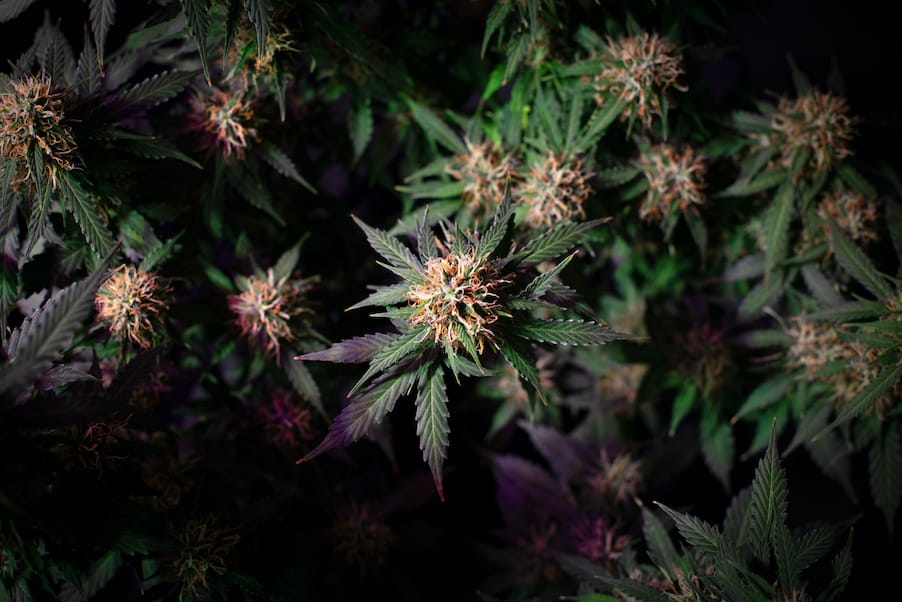



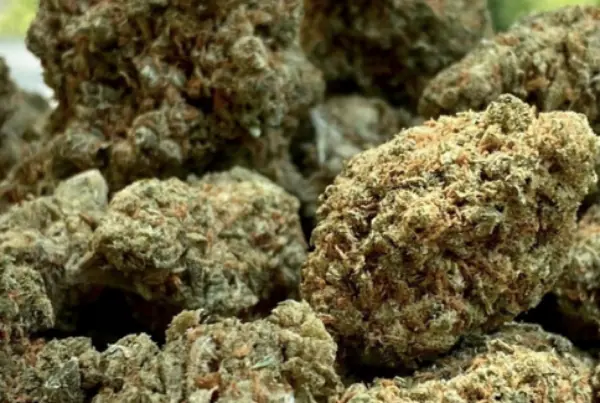
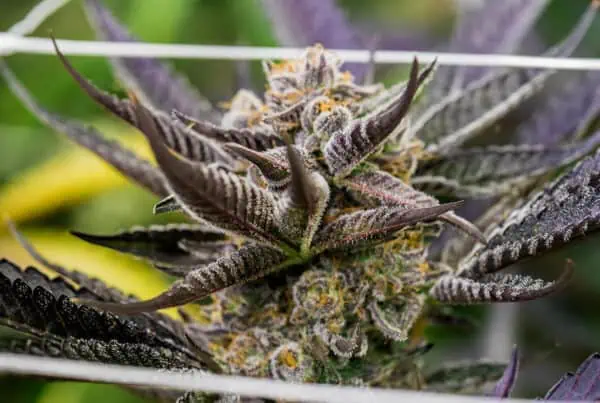


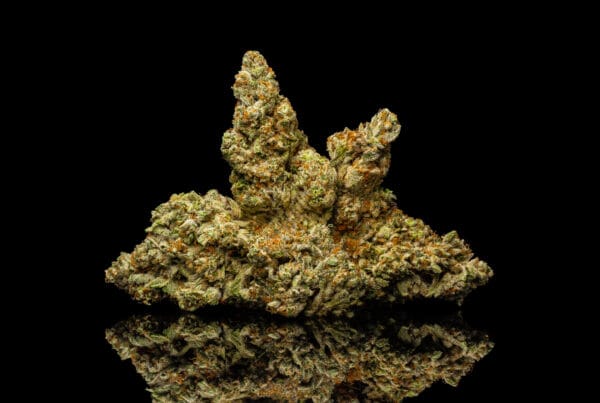

 Jeff was involved in an accident where he endured a traumatic brain injury. He had a week-long stay in ICU where brain surgeons
Jeff was involved in an accident where he endured a traumatic brain injury. He had a week-long stay in ICU where brain surgeons  100% risk free money back guarantee within 48 hours after purchase if student has not completed any of the courses or exams.
100% risk free money back guarantee within 48 hours after purchase if student has not completed any of the courses or exams.